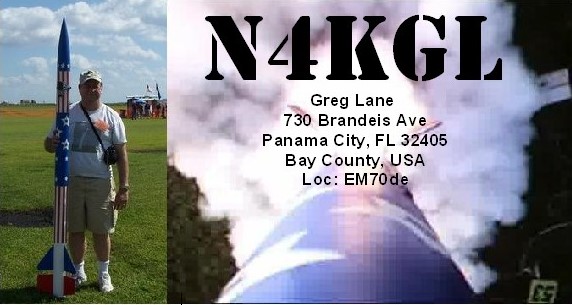For horizontal polarization on portable ops, I am favoring the SOTAbeams BandHopper 40-30-20 meter link dipole. This is an extremely lightweight antenna that comes with RG-174 feedline. The good news is that the antenna does not weigh down the top of a telescoping pole. You will need to lower it to change the band using the jumper clips. I use the SOTABeams Tactical 7000 telescoping pole to support the BandHopper. There are lighter telescoping poles that would work as well. Note, I also like the LNR Trail Friendly End-fed for 40, 20, and 10 meters. I just have not used it lately.
 |
| SOTABeams Band Hopper at a campsite. Hard to see, isn't it. |
For vertical polarization on portable ops, I love the N6BT Bravo 7K vertical. The Bravo 7K is self-supporting with integrated radials. When I am on the saltwater shore, the vertical is my top choice due to the saltwater effect. I also have had good success inland. It does not require a tuner. I find I can switch between 40 and 20 by changing the coil jumpers. The other bands require adjusting the element lengths. The adjustments are pretty straightforward.
 |
| My Bravo 7K Vertical. The horizontal elements are hard to see. |
For the ultimate in portability, my choice is the Alexloop magnetic loop. During the current solar minimum, it has been my backup, not my go-to. However, I have high hopes for the Alexloop in Solar Cycle 25 when the upper HF bands get better. You can't beat it for a quick and easy setup. The performance will surprise you even on 40 meters.
 |
| My PY1AHD AlexLoop magnetic loop on the beach. |
For FM Satellites on portable ops, I use the 2 meter/440 MHz Elk Log Periodic. I can disassemble it for easy pack up. It is also great for T hunts.
 |
| My Elk Sat Antenna. It was a cold January day. |
For ARRL and Winter Field Days, the MyAntennas.com 80-10 EFHW has been very successful. It is 130 feet long. I support it with a camo pole support and several Jackite poles.
 |
| My MyAntennas.com 80-10 EFHW. It is 130 feet long. |
For Field Day on a small campsite, I designed a 100-foot long vertical loop fed a the bottom center with a remote tuner. It is supported by three 30 foot telescoping poles. The horizontal length is 30 feet, and the vertical sides are 20 feet. The lower wire is 10 feet off the ground. I have used this antenna at campsites and on island expeditions.
 |
| My Field Day 100 foot vertical loop uses three Jackite poles for support and a remote tuner at the bottom center. |
 |
| My N6BT BT vertical in the backyard of my home. The horizontal elements are hard to see. |
At my home QTH for receiving, I have a noise problem on the HF bands due to high-voltage lines running over my backyard property line.. The noise is intolerable on any antenna I put in the backyard. This encouraged me to try a receiving loop. I choose the W6LVP broadband magnetic loop with the T/R switch. For me, the loop makes HF operating at home possible. I mounted the W6LVP loop on a four-foot mast in the front yard near the house. I use a lightweight rotator to adjust the orientation to get a noise null. I use the N6BT V8 in the backyard as the transmit antenna.
 |
| My W6LVP HF receive loop in the front yard of my home. |
Have fun with antennas!
Greg N4KGL
